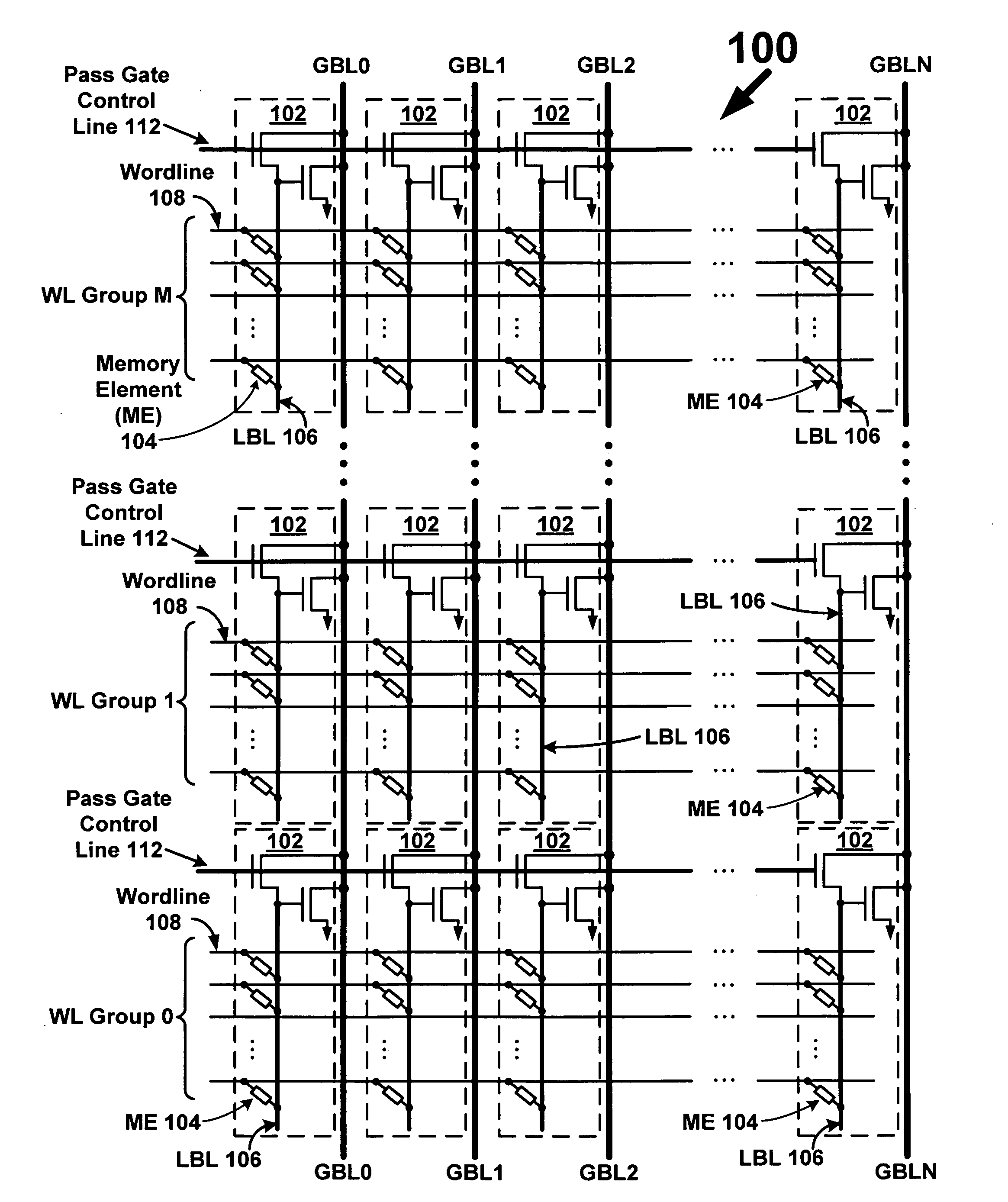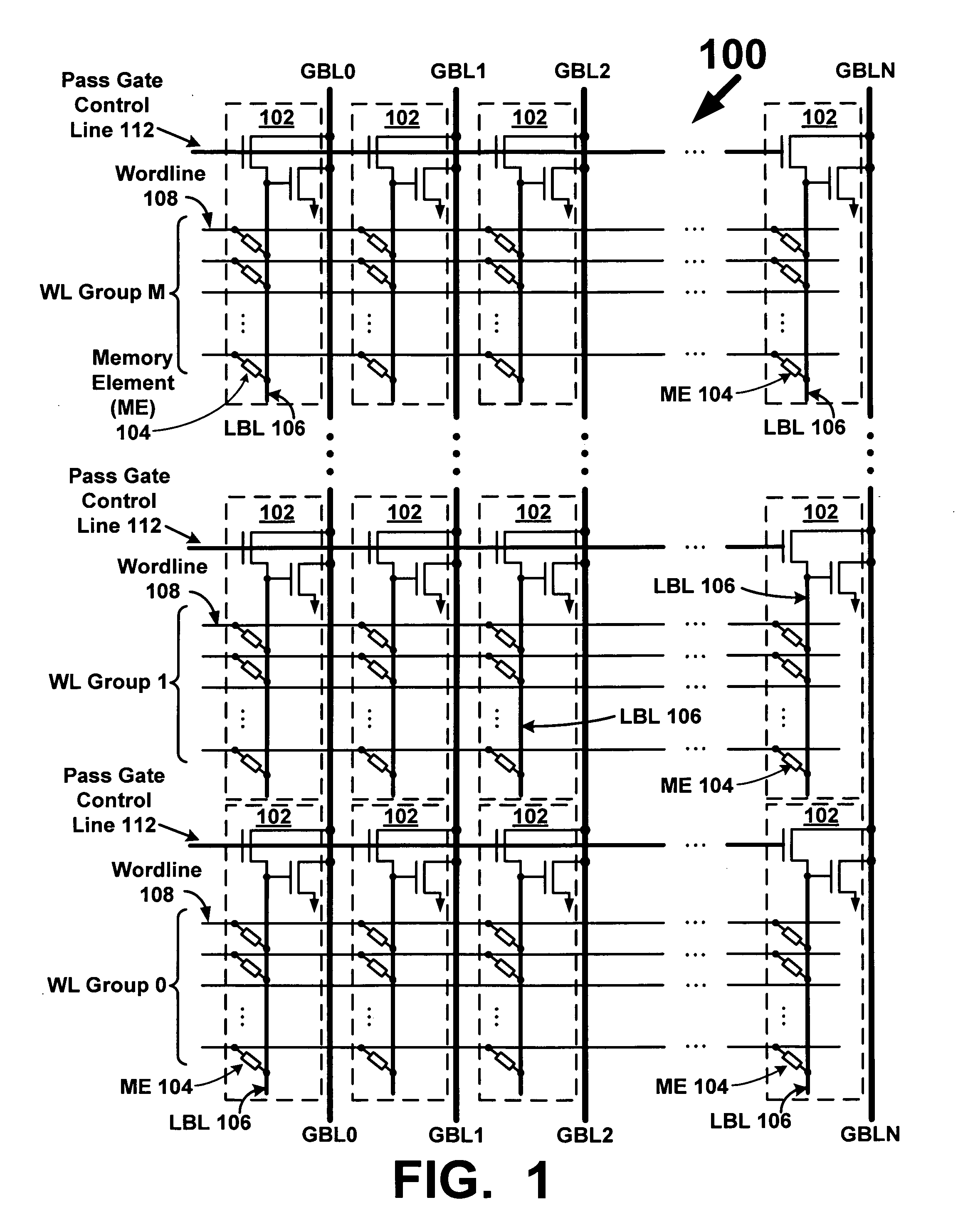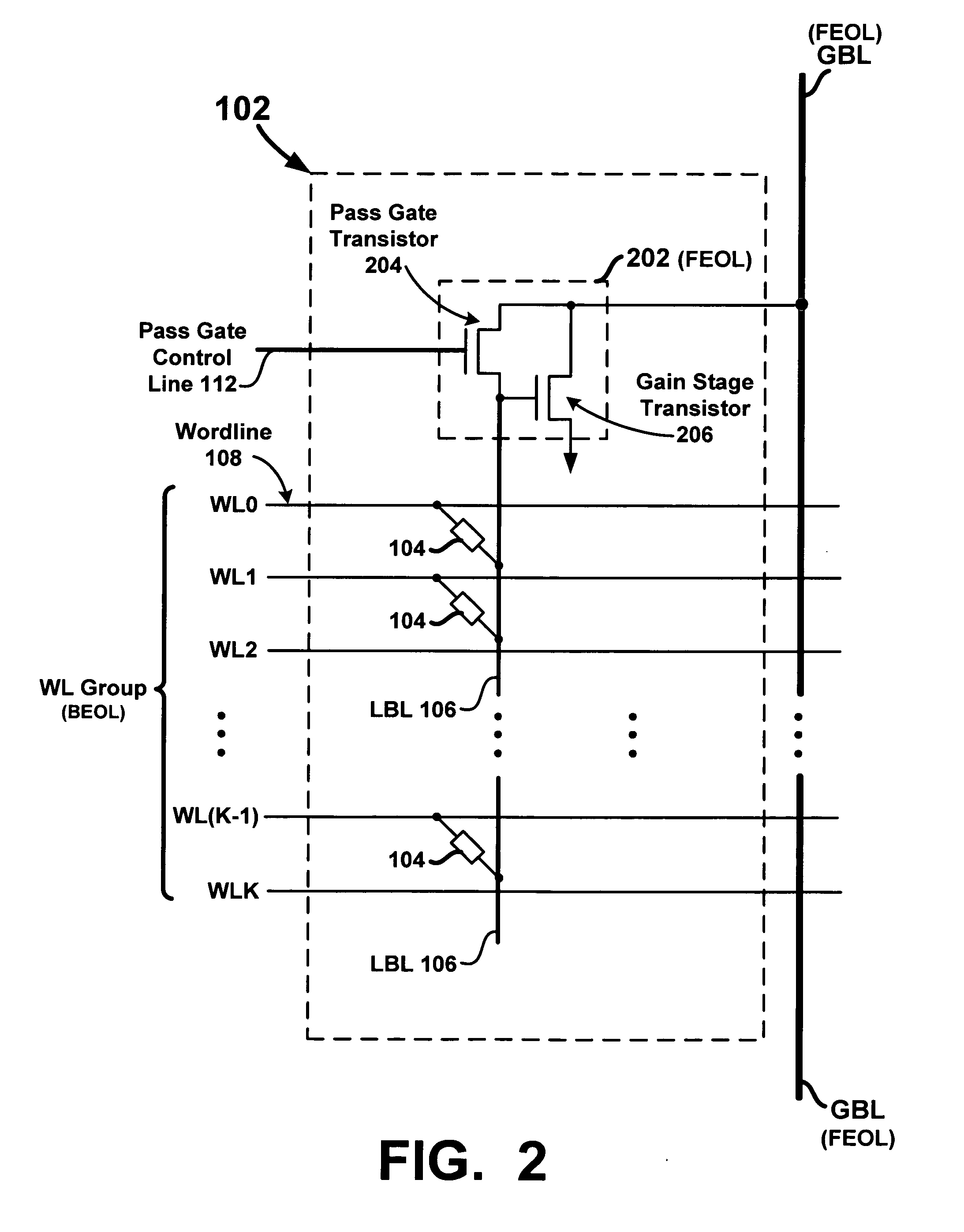Memory array with local bitlines and local-to-global bitline pass gates and gain stages
a memory array and global bitline technology, applied in the field of memory, can solve the problems of reducing the p/e cycle that floating gate transistors can endure, the fundamental limit to the extent to which floating gate transistors can be scaled without suffering data retention problems, etc., and achieve the effect of high ra
- Summary
- Abstract
- Description
- Claims
- Application Information
AI Technical Summary
Benefits of technology
Problems solved by technology
Method used
Image
Examples
Embodiment Construction
[0031]Referring to FIG. 1 there is shown a memory array 100, according to an embodiment of the present invention. The memory array 100 comprises a plurality of memory array portions 102, each associated with one of (M+1) wordline (WL) groups and one of N+1 global bitlines (GBLs) GBL0, GBL1, . . . , GBLN, where M and N are integers greater than or equal to zero. As can be observed in the more detailed drawing of the memory array portion 102 in FIG. 2, each memory array portion 102 includes a local bitline (LBL) 106, a pass gate transistor 204, and a gain stage transistor 206. K+1 memory elements 104 are coupled between each LBL 106 and K+1 WLs 108 of an associated WL group, where K is an integer greater than or equal to zero. The number of memory elements 104 per LBL 106 is set during design and determined by a number of factors, including but not limited to: overall memory array size, required operation parameters, program and / or erase operation parameters, type of memory elements 1...
PUM
 Login to View More
Login to View More Abstract
Description
Claims
Application Information
 Login to View More
Login to View More - R&D
- Intellectual Property
- Life Sciences
- Materials
- Tech Scout
- Unparalleled Data Quality
- Higher Quality Content
- 60% Fewer Hallucinations
Browse by: Latest US Patents, China's latest patents, Technical Efficacy Thesaurus, Application Domain, Technology Topic, Popular Technical Reports.
© 2025 PatSnap. All rights reserved.Legal|Privacy policy|Modern Slavery Act Transparency Statement|Sitemap|About US| Contact US: help@patsnap.com



